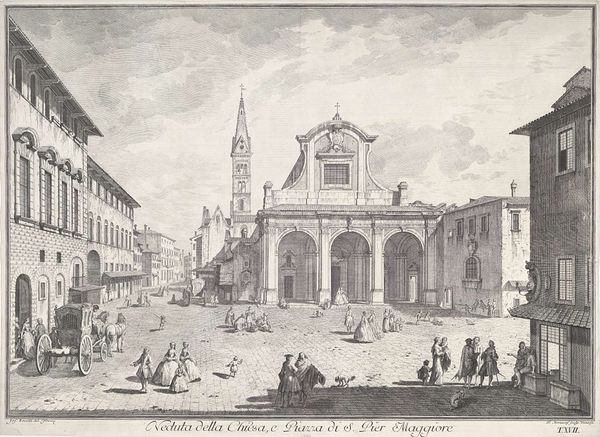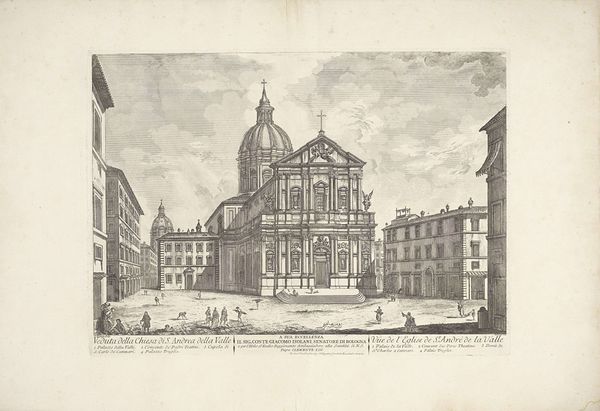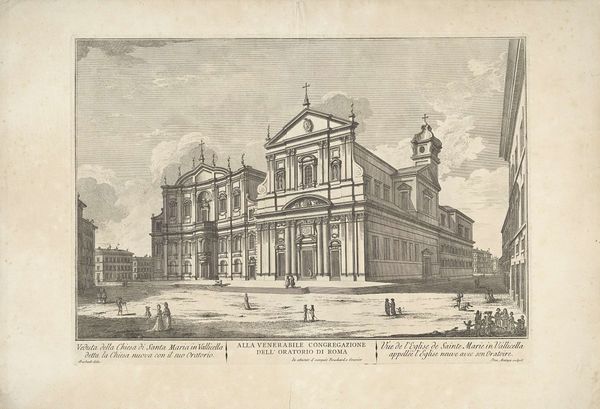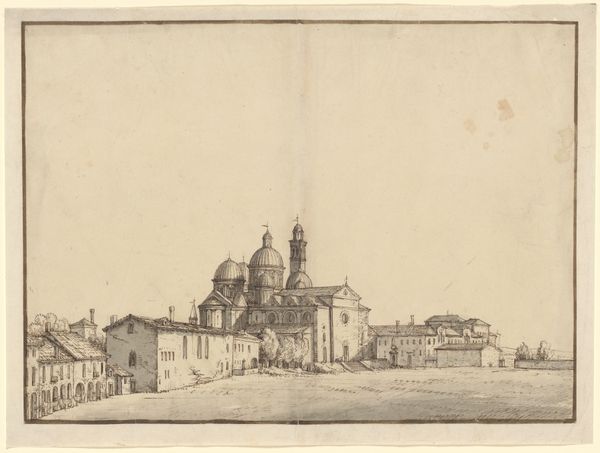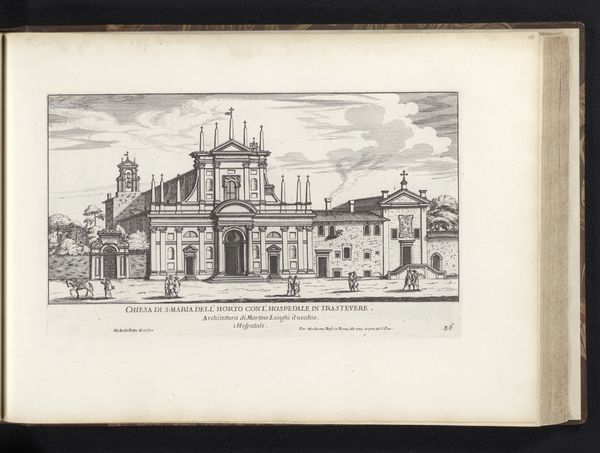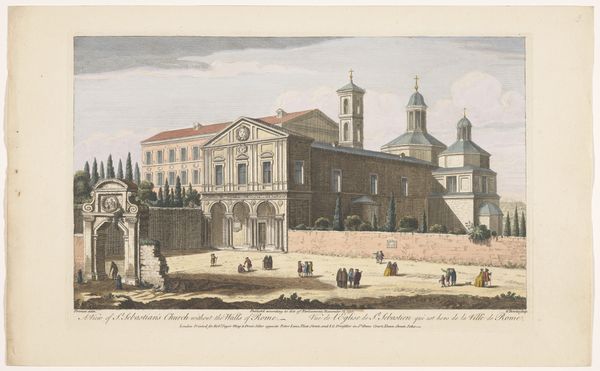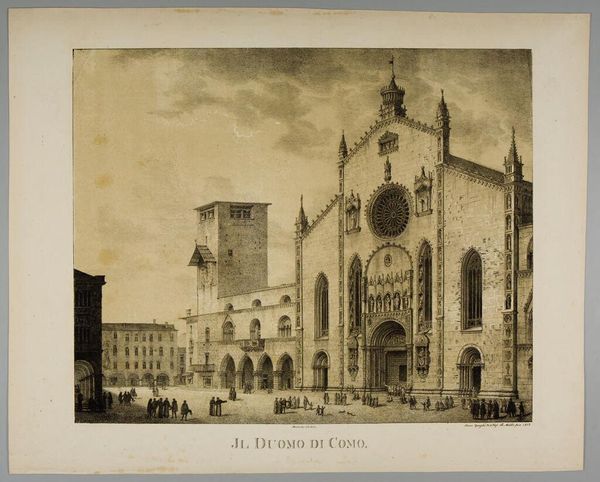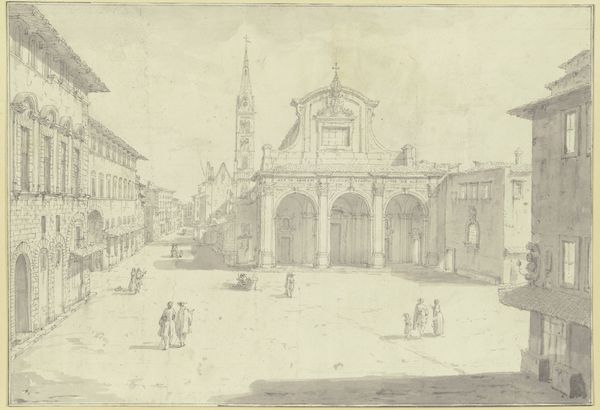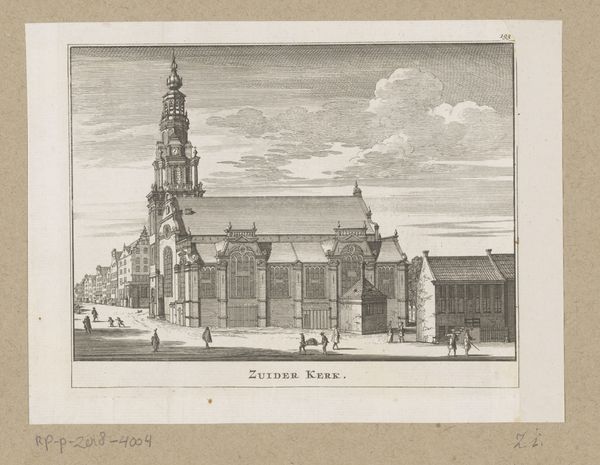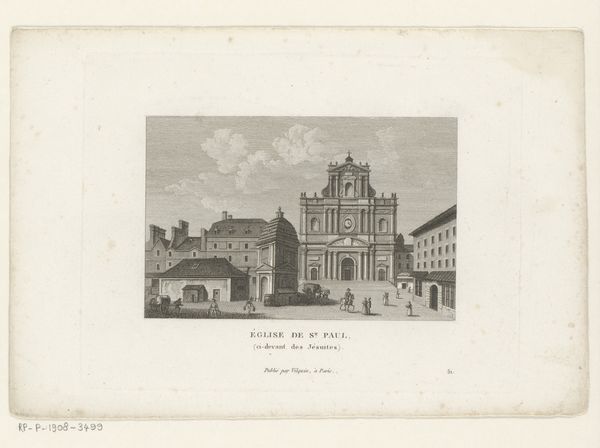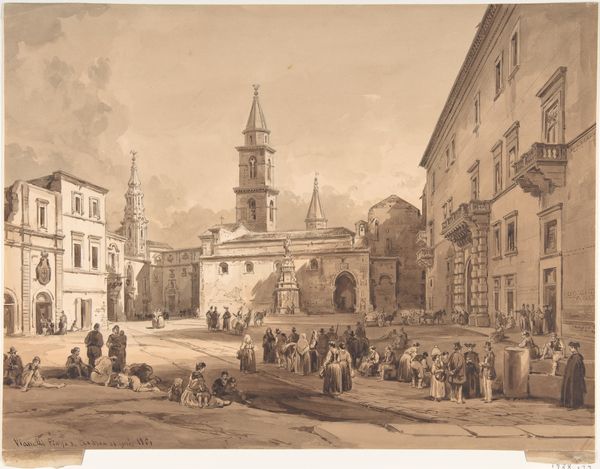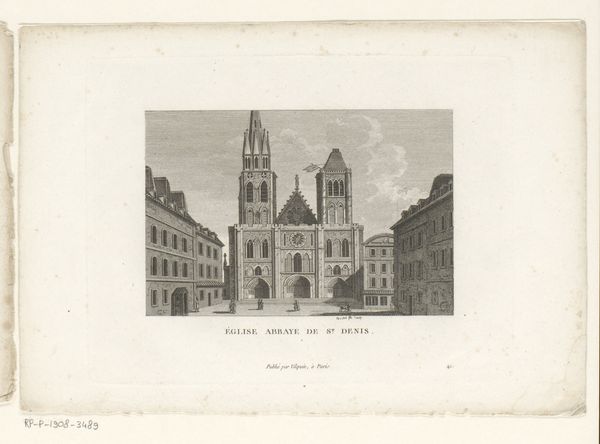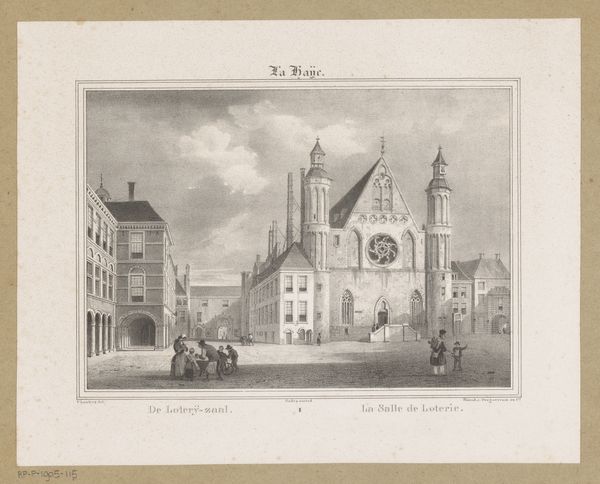
aquatint, drawing, print, etching, engraving
#
aquatint
#
drawing
#
neoclacissism
# print
#
etching
#
landscape
#
etching
#
cityscape
#
italian-renaissance
#
engraving
Dimensions: 238 mm (height) x 293 mm (width) (plademål)
Curator: Caroline Lose created this remarkable cityscape. Dating from between 1780 and 1880, it’s titled "Katedralen i Como," or "Como Cathedral," and it's now housed here at the SMK. What are your first thoughts? Editor: I feel a distinct sense of grandeur, almost frozen in time. The meticulous lines and monochrome palette create an aura of serenity, like a half-remembered dream of a Renaissance past. Curator: Yes, that stillness speaks to the period's interest in capturing idealized versions of historic spaces. Lose likely employed a combination of aquatint, etching, and engraving techniques, all popular for printmaking at the time. The prints served as relatively affordable keepsakes and reminders of the Grand Tour. Editor: It’s amazing how much detail she captures. Look at the texture of the stone, the subtle gradations of light. It invites the imagination to wander down those quiet streets. I love the understated elegance, especially the lack of dramatic color – a refreshing counterpoint to contemporary sensory overload, don't you think? Curator: Absolutely, that’s very true. The deliberate control over color reinforces the Neoclassical and Renaissance influence. She's showing us order and rationality in architectural form—and therefore also in society itself, or at least what society aspires to be. Think of it as a visual manifesto. Editor: Perhaps, or maybe she just appreciated beautiful buildings? Seriously, though, this print is doing something unique. The people gathered in front are arranged with careful attention, almost posing—and yet, a slight current of lively energy prevents the scene from ever feeling stale or academic. Curator: That juxtaposition of formality and vitality really does capture a crucial tension in the late 18th and early 19th centuries—the burgeoning Enlightenment ideals seeking to exist within established societal structures. Editor: It speaks to us now, doesn't it? Curator: Definitely. What began as perhaps a commercial venture transcends to become an essential and enduring cultural document. Editor: Well said! For me, though, it also conjures up Italy in a flash, a sense of escape that any artwork should aspire to offer its audience.
Comments
No comments
Be the first to comment and join the conversation on the ultimate creative platform.
